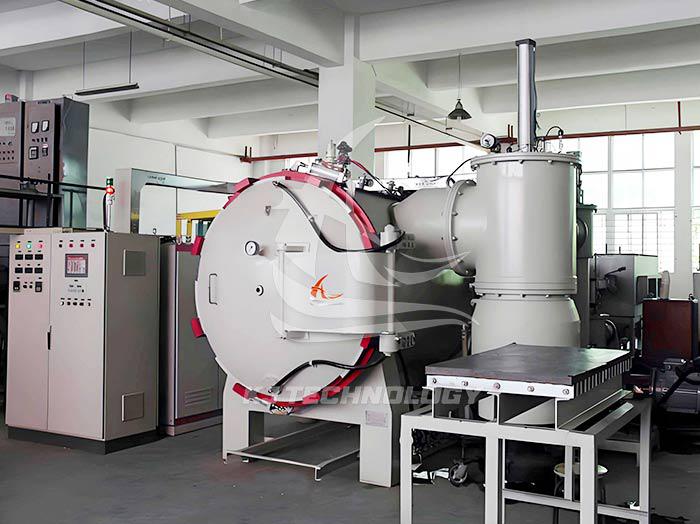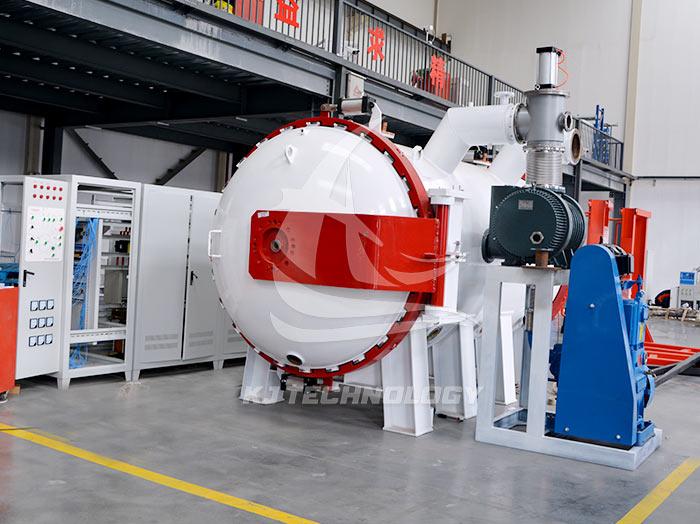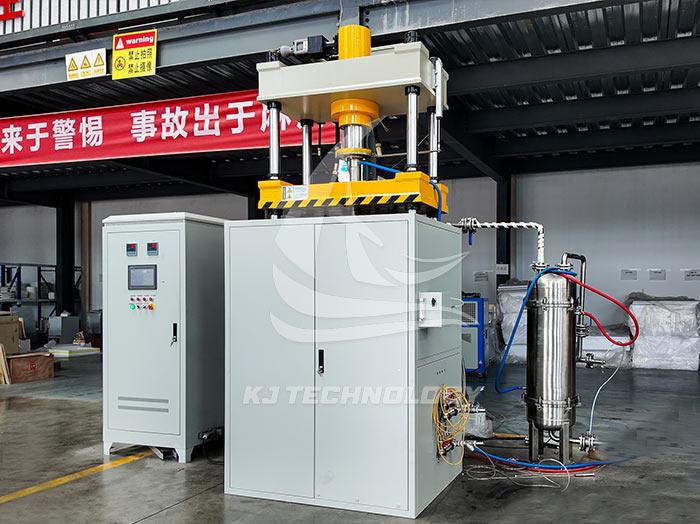Precautions for operating a high vacuum hot press furnace
 06-24-2025 Author: KJ technology
06-24-2025 Author: KJ technology
The precautions for operating a high vacuum hot press furnace include equipment inspection, operating standards, safety protection, emergency response, and maintenance, as follows:
1. Pre operation inspection:
Ensure that the equipment is stably placed, check the status of all knobs and valves, confirm whether the heating chamber is clean, and whether the water, electricity, and gas sources are working properly.
Check if the heating elements inside the furnace are intact and if the furnace is clean. The materials to be processed must be cleaned and dried before being loaded into the furnace.
Confirm that the supply of internal and external circulating water, various gases, electrical systems, and backup power systems are functioning properly.
Check the connection of the water cooler pipeline to ensure that the inlet is connected to the ice water outlet on the water cooler, and the outlet is connected to the ice water inlet on the water cooler.
Check if the protective atmosphere system is functioning properly and replace the air in the buffer tank in advance to achieve the required purity of the protective atmosphere.
2. Operating standards:
Operators must be familiar with the various operation buttons of the vacuum furnace, understand their functions and meanings, and master daily operation skills. After the vacuum furnace is running, do not repair or modify the operating program parameters without special circumstances (such as fault alarms, etc.).
When loading, ensure stability to prevent the workpiece from falling, and clean the furnace door sealing ring with ethanol.
The material of the test piece heated in the furnace should not be a material with a low melting point and high vapor pressure, in order to avoid excessive evaporation and pollution of the heating element and insulation screen.
During the heating process, it is necessary to regularly observe changes in water pressure, water flow rate, and water temperature. It is strictly prohibited to stop the water supply during normal operation. Once the water supply is stopped, the backup water supply system should be opened in a timely manner.
When the furnace is shut down, the heater is powered off and the cooling water continues to cool. After the workpiece is taken out of the furnace, close the furnace door and manually evacuate to maintain the vacuum state inside the furnace.
3. Safety protection:
The operator should wear necessary labor protection equipment before operation.
The workplace of the vacuum furnace should be kept clean, all passages should be kept unobstructed, and necessary fire-fighting equipment should be equipped.
The baffle of the observation window should only be pushed open during observation, and the observation hole should be covered at other times to prevent contamination of the observation window glass. Be careful not to scratch the glass surface.
Operators are not allowed to leave their workstations arbitrarily during work, and should explain their temporary departure to the custodian clearly.
4. Emergency response:
In emergency situations, when the corresponding knobs and buttons are ineffective, press the "Control Power Switch" button. If the 'control power switch' button is also ineffective, please disconnect the main switch directly.
Always pay attention to the working condition of temperature, voltage, current and other measurement and control instruments. If abnormal furnace temperature or measurement and control instrument indications are found, the heating power must be immediately cut off, and timely inspection, analysis and handling must be carried out.
5. Maintenance and upkeep:
Regularly clean the dust and foreign objects in the electrical control cabinet, clean the vacuum chamber regularly, run high-temperature furnace cleaning programs, and equip a vacuum cleaner.
According to the "maintenance cycle" schedule, regularly maintain the equipment, especially the gas supply system and internal and external circulating water system, to ensure the normal operation of the equipment.
When the stove is not used in winter, the water in the chiller and pipes should be drained in a timely manner to prevent the internal water pipes from freezing and cracking. If conditions permit, it is best to connect another multi-purpose water source to the circulating water source, that is, to tap water for backup.








